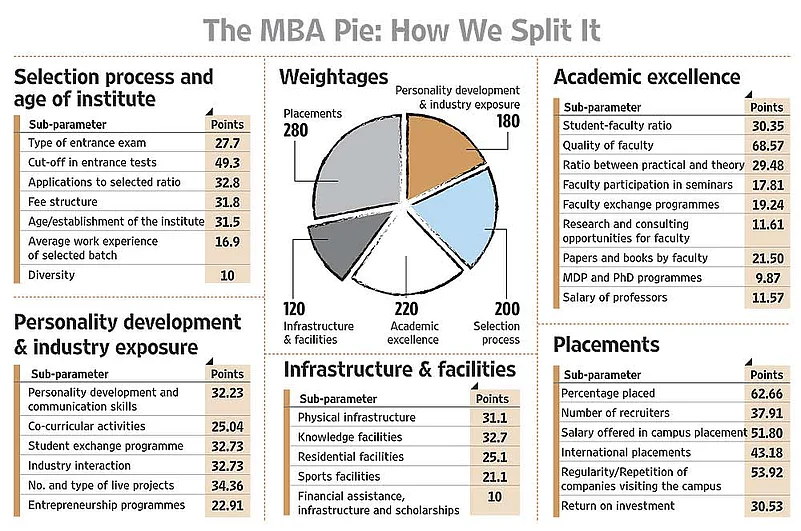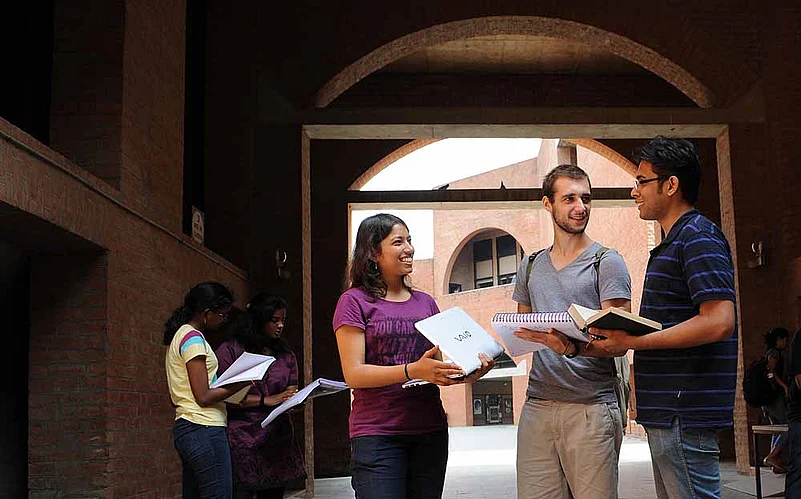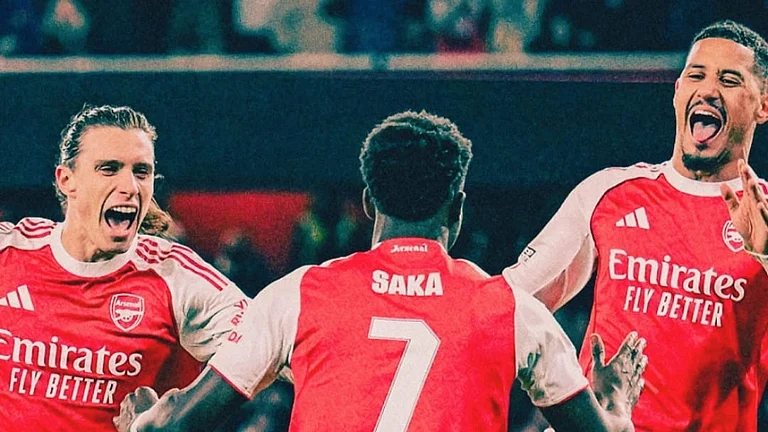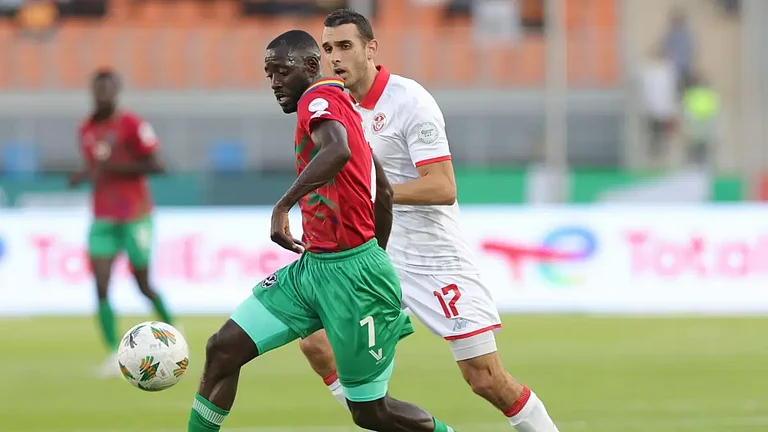Twenty days. That’s all it took for us to move from begging bowl in hand at imf’s door to celebrating the, um, “appeal” of the new RBI governor Raghuram Rajan. Clearly, even if we live in exciting times, there is many a schizophrenic moment. The disquiet, though, is real, and comes from talk about cost-cutting, job retrenchment, projects being shelved. Even so, one would have to be extremely brave (and foolhardy) to write off the India story so early. As we have learnt recently, the mood can change quickly.
Outlook’s annual ranking of top business schools (conducted by Drshti Strategic Research Services) provides a peek into this economy. Reflecting the mood, the overall scoring is lower than previous years. While there is practically no change in the top 15, there is plenty of churn down below. The crucial question remains: will industries recruit? “Mixed signals emanate from the finance sector, in the throes of a continuing slowdown. For most others (except advertising and media), it seems to be business as usual,” says A.K. Balaji Prasad, Drshti’s managing director, who feels placements will be decent this year. But with rising pressure to innovate, life’s going to get only tougher for our B-schools.
Beyond the rankings, there’s a package on the power of college alumni networks, how they define our lives (sometimes love lives), our friendships and enrich our work. There are insightful and rewarding pieces from alumni of IIT, IIM, Harvard, Wharton and others. The feeling is that most people who go here make “contacts” for life. It is not that simple. As always, choose wisely.
The top 5 Management Schools in our survey:
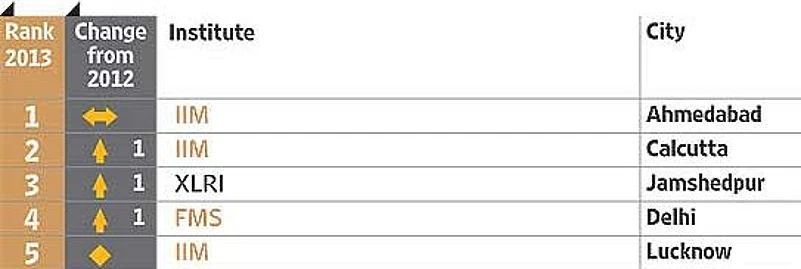
The rest of this article appears in Outlook dated October 7, 2013. Please click here to purchase a digital edition for your iPad, Android or PC
***


TAPMI if you can The Manipal gang. (Photograph by Astro Mohan)
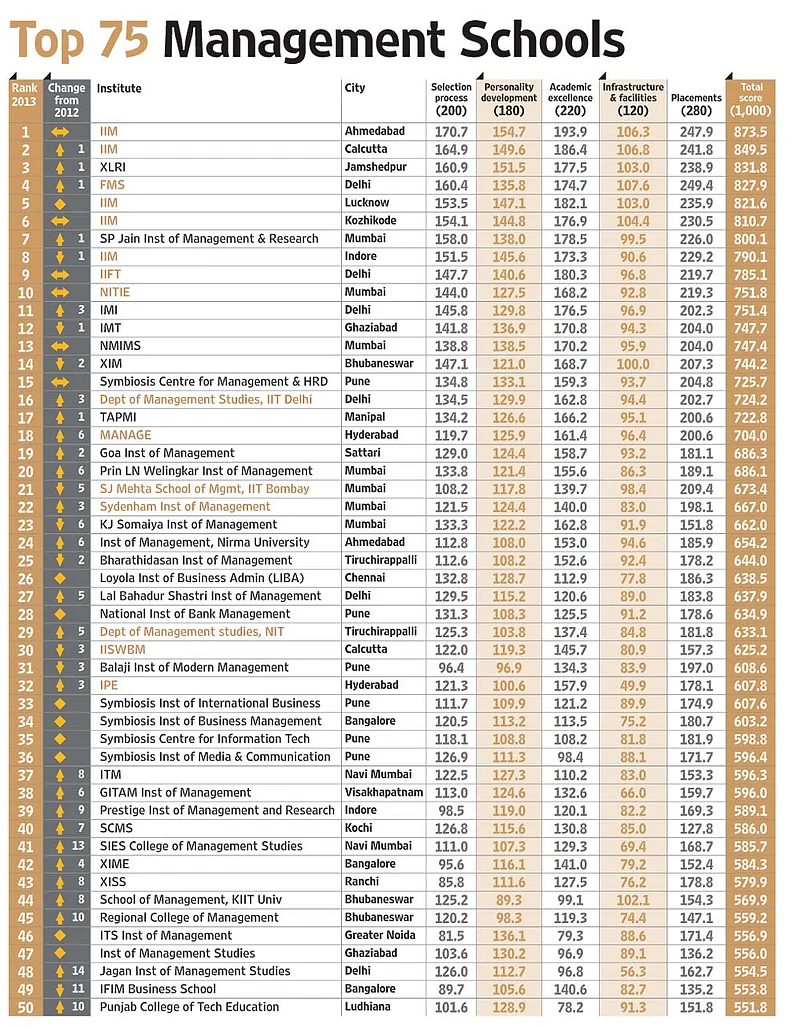

- Ranking is based on objective data and perceptual survey with equal weightages. All scores have been rounded off to one decimal place; this may result in rounding-off errors while adding the parameter-wise score.
- Only B-schools which sent objective data have been ranked. Institutes like IIM Bangalore; MNNIT, Allahabad; Fore School of Management; IFMR, Chennai; IIT Madras; IRMA did not participate while NIILM; MDI, Gurgaon; FMS, Varanasi; NIAM; IRM, Jaipur; Anna University and Amity Business School did not send data within the stipulated time and have not been ranked
- 44 deemed universities to be de-recognised by the Government of India were not considered for the ranking. This table has been updated on October 1.

First class IIM Lucknow, tops in academic excellence. (Photograph by Nirala Tripathi)
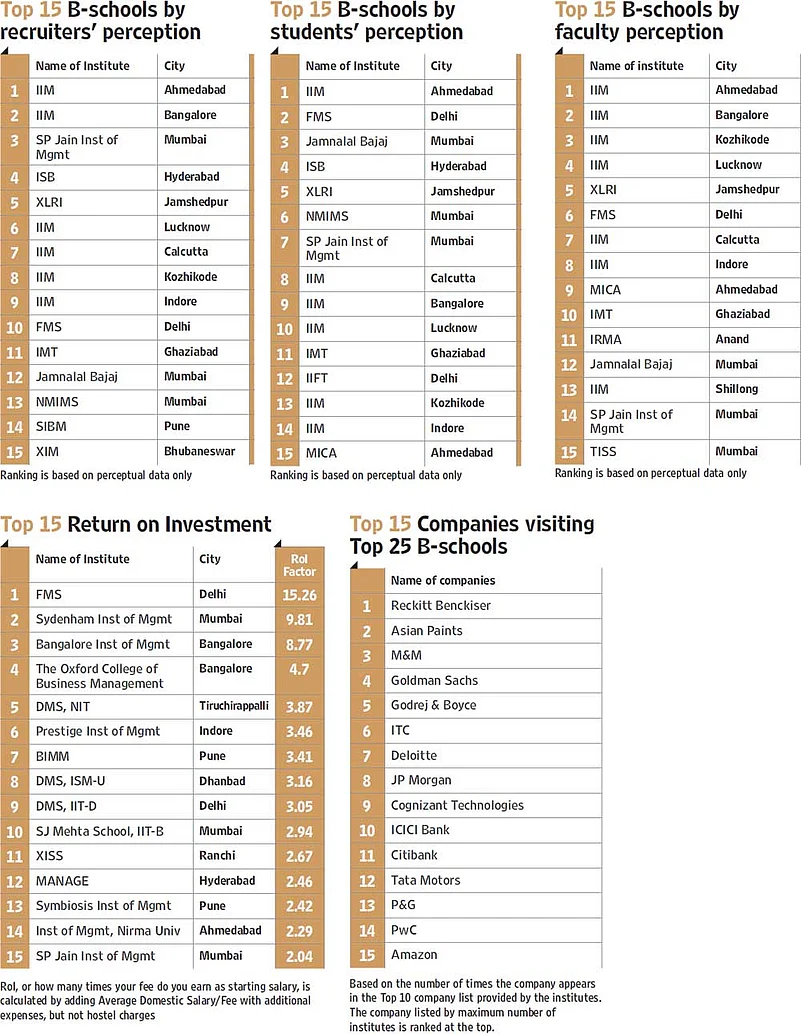
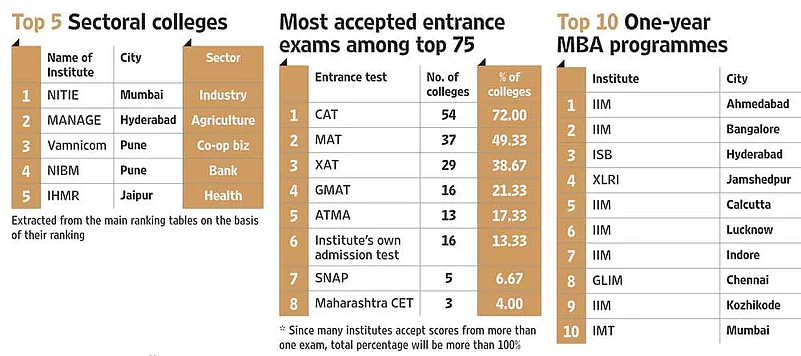

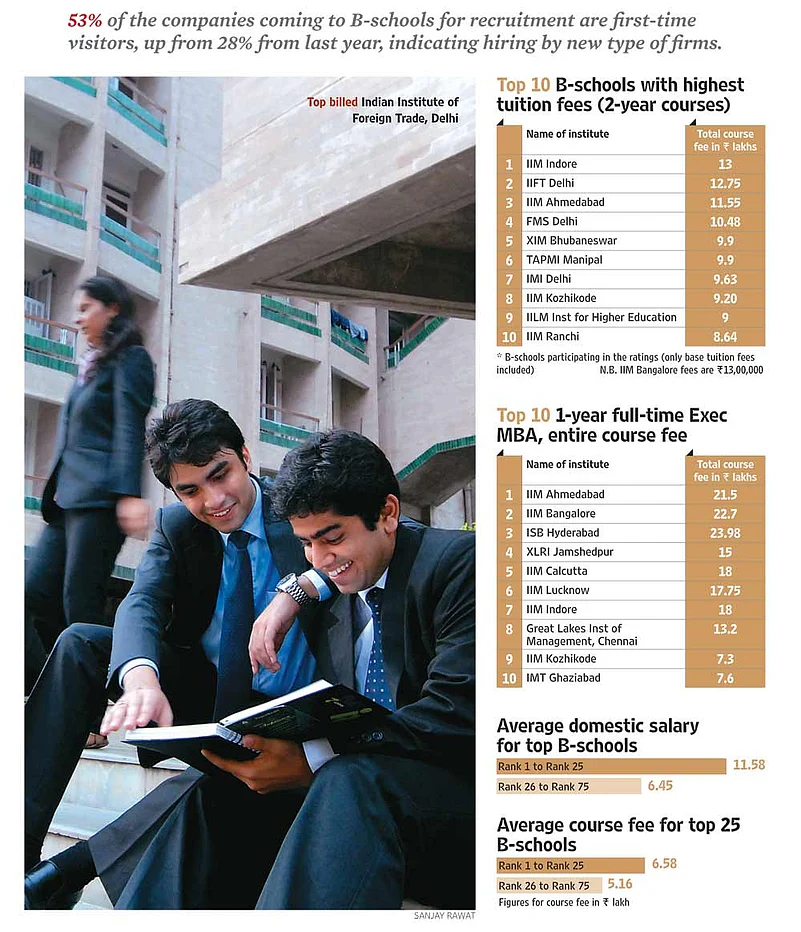
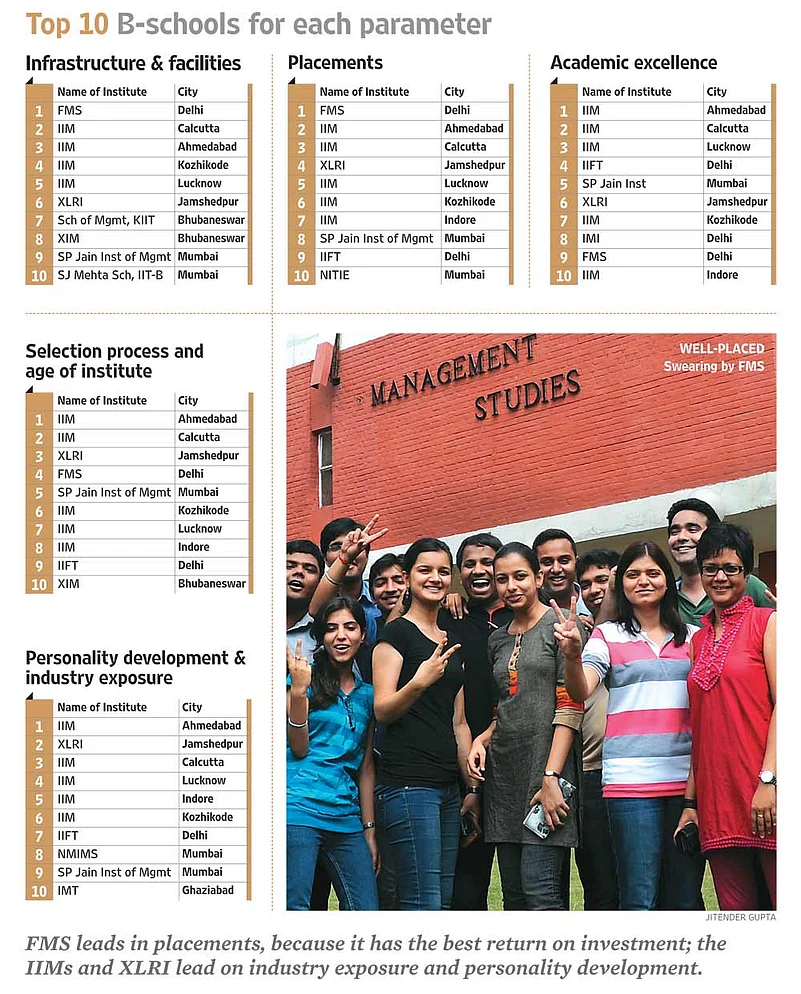
Methodology For 2013 Outlook-Drshti B-School Survey
In order to rank India’s best B-schools, Drshti Strategic Research Services (Drshti) designed a detailed, rigorous methodology involving all the stakeholders—B-schools, recruiters, faculty and students. First, a comprehensive list of B-schools was drawn up. B-schools which offer two-year full- time management courses and are recognised by a government body such as the AICTE, NAAC and AIU, are at least five years old and have had at least three batches that have passed out qualified to be ranked. The list of parameters and sub-parameters was kept the same as last year’s to have consistency and comparability, except for an increased emphasis on diversity, which seems to be gaining importance amongst recruiters. There were 135 colleges across India which provided their objective data. Data from seven colleges came too late and has not been included; 16 others were unable to submit their data within the stipulated deadline and hence were not considered for ranking. This year, 49 new institutes participated.
The objective survey was supported with a perceptual survey of key stakeholders in 12 cities (Delhi-NCR, Mumbai, Chennai, Calcutta, Bangalore, Pune, Hyderabad, Jaipur, Ahmedabad, Lucknow, Bhubaneswar and Ranchi). Questionnaire-based, face-to-face interviews were conducted with 232 permanent faculty at B-schools, as well as 632 final-year MBA/PGDM students, a total of 864 user stakeholders. In addition, HR professionals in 135 companies were also interviewed. Many companies provided responses from more than one recruiter, but these were considered as representing the company rather than the individual. Drshti researchers visited 42 institutes for physical audit of the data to verify their authenticity. Colleges that gave suspicious data were removed from the exercise.
The marks in the five parameters of the objective phase were then added to arrive at the final objective score. The perceptual ranking was derived by allotting weightage of 40, 30 and 30 per cent to the perceptions of recruiters/industry professionals, faculty members and final year students respectively. To reach the final composite score, total perceptual and objective scores were given equal weightage of 50 per cent each. This total score was used to assign the final rankings. The Drshti Research team consisted of Mukunda Giri, Pranali Rane, Pawan Kumar Singh and Angela Susan Kallor.
(Disclosure: Drshti’s managing director A.K. Balaji Prasad is an alumnus of IIM Calcutta.)
